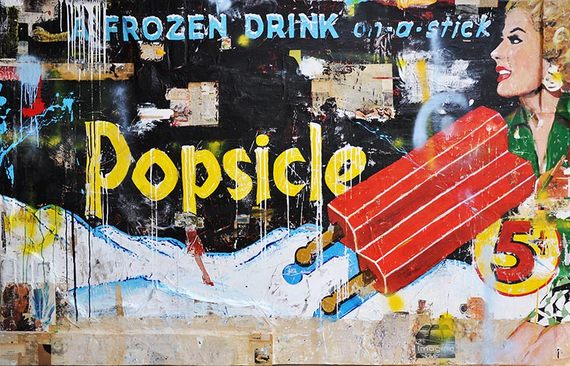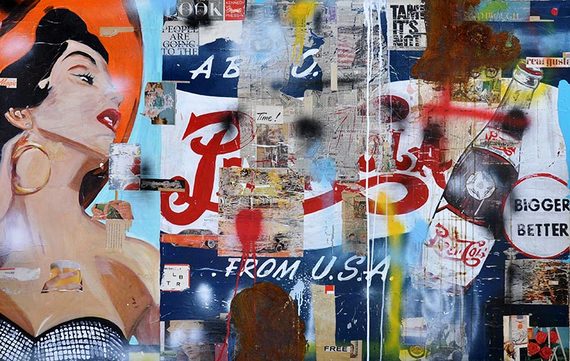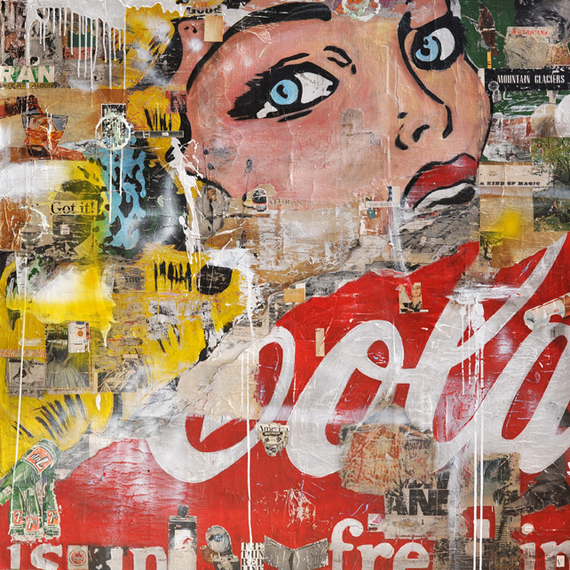Greg Miller: Buena Vista
Now through April 30, 2014
Caldwell Snyder, San Francisco
About ten years ago, American painter Greg Miller admitted the truth -- that he's a Pop artist -- and it felt good to own it. And he's right; the soul of his large-scale, high-gloss, chromatically saturated work is popular culture. His is a visual language of gorgeous women, classic cars, found typography, surfboard silhouettes, blue waters, billboards, spaghetti westerns, comic books and memes of childhood. His resin-coated surfaces are as hard and sheer as ice. Even the compositions without heroically beautiful women are quite sexy as a matter of optical appeal. So then, why struggle with embracing the Pop Art moniker? Because despite the myriad visual cues, Miller's art doesn't really look like Pop. It's not industrial. It does not obscure the hand of the artist in its rendering. His aesthetic is maximalist and flurried; his process is demonstrably labor-intensive; and his graphic style is flirtatiously loose, even raw. So while it could not be other than Pop Art, Miller addresses Pop, not like a thinker, but like a painter.
At its core, Pop Art was about the qualities of its time, which was also Miller's childhood. A time of post-war optimism for a clean, well-lit future in which consumerism promised happiness and the west coast was winning the future. Thus, his work absolutely exists in dialog with artists like Ed Ruscha and Mel Ramos. Except Miller's side of the conversation is happening in another dialect, the lingua franca of a new generation whose experience of culture is messy, fraught and overloaded with simultaneous information. Hence, the Boschian density of layered and enmeshed detail. But Miller's is a plague of pleasures, free of irony if not obsession. This work is joyful, exuberant and unapologetically about California. Buena Vista is a part of San Francisco where Miller's parents lived in the 1940s. He came of age in the Bay Area of the 1960s and '70s, under the influence of beatniks and poets like Wallace Berman, Wally Hedrick and George Herms. His visual style was born from that fractured aesthetic and the charisma of decay.
In L.A., Miller felt the allure of both Pop and light and space, which blended with his early influences, becoming his mature style of cumulative rendering and high-gloss surfaces. And about those surfaces -- as a formal matter, the sealing fossilizes the paintings, which are built of dozens of layers and benefit from the physical, almost sculptural cohesion. The choice to use surfboard resin instead of varnish to seal them imparts essential insight into Miller's art and to life as well. This technique creates the dazzling effects of depth, contrast and glittering movement familiar in art history, while containing wit and meaning as inherent qualities of the material. Because, always, California.
All images courtesy of Caldwell Snyder Gallery.



